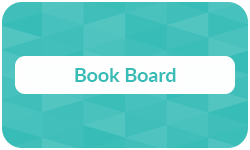
Whether you want to do bookbinding yourself or with machines, you will have to choose the right materials to use. Especially, the decision on book boards can be tricky, since there is a wide variety of very similar options. Each of them has its advantages and disadvantages, which, however, will be addressed in the corresponding article. This text will serve as a short overview of the different types.
Inhaltsverzeichnis
Definition: Book board
A book board is the sturdy sheet used in hardcover bindings as a stabilizer of the cover. It is afterward enveloped in cloth, fabric, or paper for a refined finish. The board itself can be made from cardboard, wood, plastic, or a mixture of different materials.
Hardcover with individual embossing
- Professional binding for thesis, dissertation, or books
- Price calculator and 3D live preview
- Print on demand with fast delivery right to your doorstep
Learn more!
Types of boards
There are many types of book boards to choose from, which are listed in the table below.
Chipboard
Chipboard is a material made from wastepaper, wood pulp and wood waste being pressed together. Occasionally, it is also referred to as “particle” board because of the different ingredients it consists of.
Davey board
Davey board is a higher quality chipboard, made from wood pulp or wet lap without any chemicals or acids, making it stable as well as flexible and thus a great choice for high-quality bookbinding.
Bristol board
Bristol board is an uncoated paperboard, ideal for imprinting or painting, but it can just as well be covered in cloth or fabric, depending on the demands.
Museum board
Museum board is made from cotton, making it easy to cut and highly flexible while still maintaining a great stability.
Grey board
Grey board is entirely made of recycled paper pulp, hence the name originating from its color. It is highly flexible but lacks in stability, which, however, makes it especially great for the book spine.
Green millboard is an eco-friendly, flexible alternative to greyboard or Bristol board, suitable for both the spine and the cover if the book will not be in daily use, for example for aesthetic restorations.
Ply measurement
Ply is a unit to describe how many layers a material has, in this case, book boards. These can range from single ply to 8-ply or even higher. For bookbinding, 2-, 3-, or 4-ply is the preferred thickness. Depending on the material used, the same ply measurement does not have to nasty that the book boards have the same thickness. A 2-ply paper is far thinner than a 2-ply Davey board.
Paperback with your individual design
- Individual design for thesis, dissertation, or books
- Use a customizable pre-made design or create your own
- Order online with fast delivery right to your doorstep
Learn more!
FAQs
A book board is the stable sheet of board that makes up the cover of a book, protecting the book block inside. It can be made of different materials, such as wood, paper, or cotton.
While chipboard is cheaper and mostly made of recycled scraps from the wood and paper industry, Davey board insists on high-quality wood pulp or wet lap, refusing any chemicals in the manufacturing process.
The best book board for bookbinding depends on your needs and budget. The Davey board ensures high quality and stability, but also comes with a higher price. Bristol board is a widely used and cheaper alternative made from paper and usable for both cover and spine.
Greyboard is made of recycled paper pulp, which makes it more flexible and less stable. This is why it is most suited for book spines, which are bent a lot during reading.